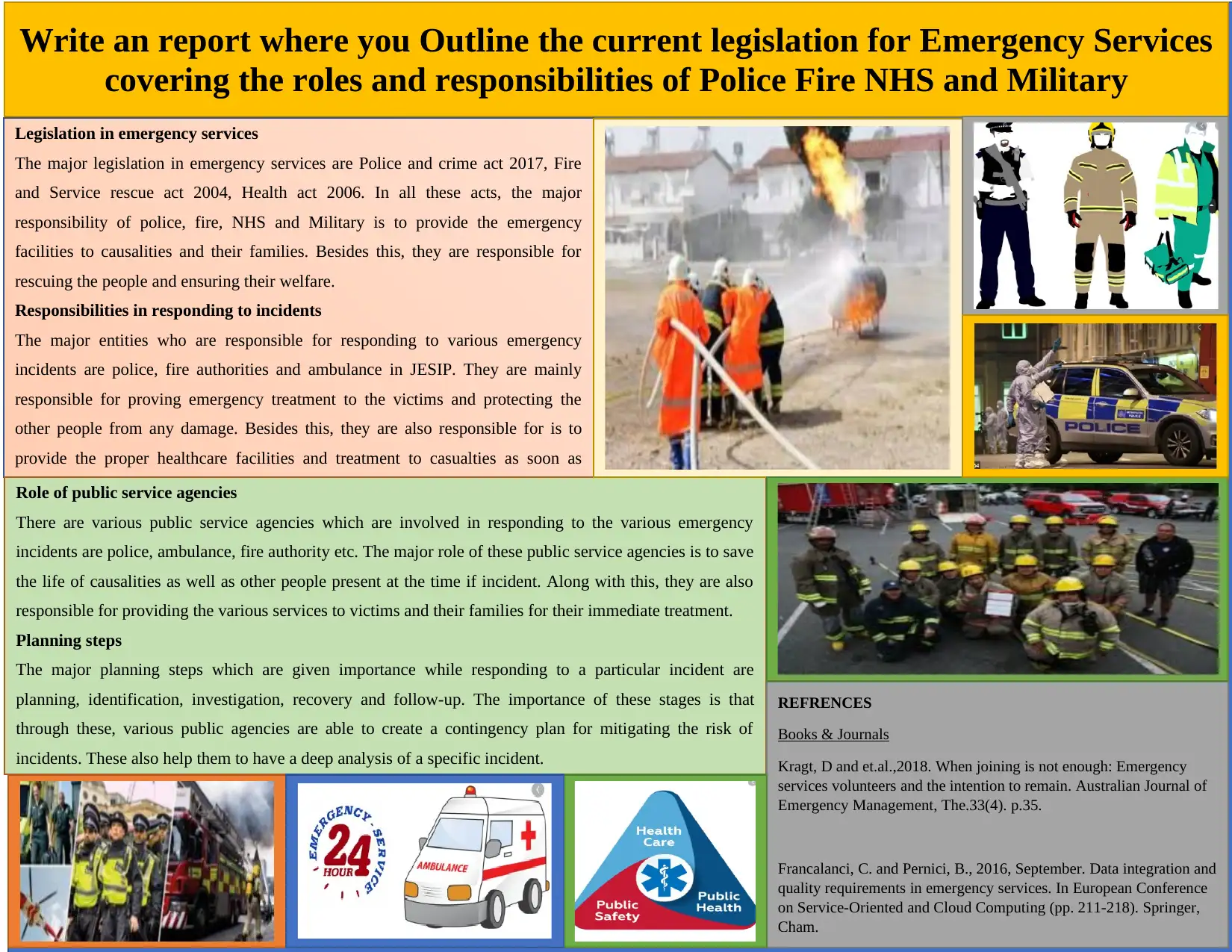Emergency Services: Legislation, Roles, Responsibilities and Planning
VerifiedAdded on 2023/01/13
|1
|390
|21
Report
AI Summary
This report examines the legislation governing emergency services, focusing on the roles and responsibilities of the police, fire service, NHS, and military. It highlights the key legislation, including the Police and Crime Act 2017, the Fire and Rescue Services Act 2004, and the Health Act 2006. The report details the responsibilities of these agencies in responding to incidents, providing emergency treatment, and ensuring public safety. It also outlines the role of public service agencies and emphasizes the importance of planning steps, such as planning, identification, investigation, recovery, and follow-up, in mitigating risks and analyzing incidents. The report references relevant literature to support its analysis.







![[object Object]](/_next/static/media/star-bottom.7253800d.svg)